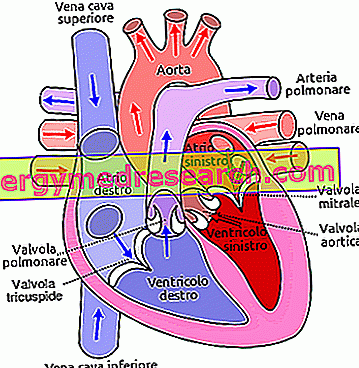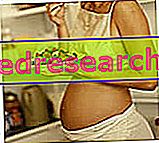Generality
Shortbread biscuits are sweet and dry pastry foods.
They have an independent gastronomic purpose; represent a typical product of secondary meals (snacks) and Italian breakfast. They often accompany drinks like tea, milk or juices.

There are many types of shortbread biscuits; are distinguished by:
- Shape and size.
- Recipe / type of pastry.
- Characteristic ingredients (aromas, colorings, etc.).
- Nutritional characteristics.
Shortbread biscuits have a significant caloric intake and not negligible chemical characteristics; due to their metabolic impact, these foods must be consumed in limited quantities and frequency.
Types
As anticipated, shortbread biscuits can be classified according to different criteria.
Nutritional Features
Shortbread cookies are sweet foods.
They have a fairly high energy intake, which can increase with the percentage of butter, with the replacement of the latter with the clarified etc.
The calories come mainly from lipids, followed almost equally by carbohydrates and, finally, by proteins (the lipid / carbohydrate ratio is variable depending on the recipe).
Fatty acids tend to be saturated and simple carbohydrates (from sugar); proteins are mixed, with high and medium biological value.
Shortbread biscuits contain a lot of cholesterol, a lipid that can be increased by increasing the yolks or using clarified butter.
The fibers are present in average quantities, although it is possible to increase them by preferring whole grain flours.
Among the vitamins, A stands out above all, and with regard to mineral salts, a moderate sodium content is found (which increases with the addition of cooking salt).
Shortbread biscuits are not a suitable food for frequent and systematic consumption. They are excessively fat and caloric. They also provide significant amounts of cholesterol and saturated fatty acids.
The share of simple sugars (sucrose) is excessive.
Shortbread biscuits are NOT suitable for clinical nutrition against overweight, hypercholesterolemia, hyperglycemia or type 2 diabetes mellitus and hypertriglyceridemia.
They contain a small amount of lactose and massive doses of gluten; they do not lend themselves to the dietary regime for the related intolerances.
Admitted by vegetarian philosophy, they are instead rejected by the vegan one.
The average portion as a snack can be 20-30g (88-110kcal).
Shape and Size
The shape and size of shortbread cookies change according to the gastronomic purpose and the type of dough.
Large and regular biscuits are generally more easily drenchable and lend themselves to being dipped in milk as a morning food.
Smaller biscuits, with a characteristic shape (heart, star etc.) and enriched (jam, covering chocolate, etc.) are often more friable and light. They are used for afternoon tea or eaten alone.
dough
The shortcrust pastry doughs can also change significantly.
The most important differences concern:
- Type of flour: wheat or other cereals (even gluten-free for celiacs), refined or wholemeal. Recently the experimentation of legume flours (for example chickpeas or broad beans) has begun; these replace 10% of wheat flour and allow to optimize the biological protein value and some physical characteristics of the finished biscuit.
- Presence of chemical yeast: it can give lightness and greater volume to the food.
- Relationship between butter and flour: butter is the characteristic element of shortbread biscuits; some recipes plan to increase or decrease the quantity depending on the aroma and the final fragrance you want to obtain. Some prefer to use the clarified one, which promotes greater friability but significantly increases the fat content.
- Type and quantity of sugar: certain formulas provide a quantity greater than 50% compared to the basic recipe. In this case almost exclusively icing sugar is used, due to its greater absorbency and solubility. In certain recent formulas, the one of integral reed is preferred (for nutritional reasons, more or less founded).
- Quantity of egg yolks and type (raw or cooked) and relationship with the dough: the traditional pastry needs at least two yolks for every two kilograms of dough. By doubling the amount, it becomes necessary to reduce the butter by at least 50g. Using the cooked and crumbled egg yolks, a more friable dough is obtained with a characteristic flavor. Whole eggs are rarely used which require more flour.
Characteristic ingredients
They represent a variable closely related to the dough and the nutritional reason (see below).
They can be of any kind, but more frequently they belong to the following groups:
- Additive and / or spice aromas: vanillin, vanilla, orange or lemon flavor, cinnamon, etc.
- Additive dyes: carotenoids etc.
- Whole, chopped or powdered oily seeds: almonds, walnuts, hazelnuts, pine nuts, etc.
- Fruits or parts thereof, fresh or preserved: cedar peel, orange juice, flour or coconut flakes, etc.
- Liqueurs: especially rum.
- Bitter cocoa or chopped chocolate.
Very Easy Biscuits Biscuits - Easter Bells
X Problems with video playback? Reload from YouTube Go to Video Page Go to Video Recipes Section Watch the video on youtube



